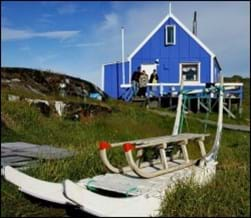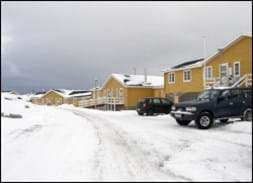Avannaata Kommunia is an attractive place to settle, providing the basis for the good life. But we want to be even better. The starting point is an active and proactive housing and settlement policy closely linked to business development, service supplies and education opportunities. At present, the Government of Greenland and the municipalities own the majority of homes in Greenland. Since the turn of the millennium, the authorities have prioritised construction of privately owned houses.
In Avannaata Kommunia there are a total of 4 towns and 23 settlements with a total of approx. 3,800 households. The towns and settlements each have their distinctive character and identity, and we must preserve and exploit it positively in the future development of the municipality. This means that it will be necessary to prioritise, e.g. when appointing new growth areas. The prioritisation is based on a pattern of settlement, which builds on the unique qualities, potentials – and challenges – of the towns and settlements. And this uniqueness can contribute to variety and versatility within the municipality.
However, currently, the housing market is contributing to moderating the economic growth and mobility, as unemployment and a shortage of housings in many cases prevent people from moving. This has a negative impact on the productivity and the economy – private as well as municipal. To overcome the housing shortage, there is a need to build more social housing and stimulate private residential construction. The rule of thumb is that there should be a building lot available for everyone wishing to build.
The supply and standard of housing in the municipality varies to a great extent, and there is generally a large need for maintenance and repairs – inside and outside. It will take renewed focus to prevent the loss of values worthy of preservation and good building traditions. Household sizes also vary, which does not necessarily fit the new demands and family forms gaining foothold. This forces us to think differently when we plan and build housing for the future – higher quality, greater variation and supply, lower energy consumption etc. This is an important task that we can and will solve by joint effort.
Goals
- There must always be room for new housing and new citizens in the Kommune Qeqertalik. This should be secured through a new holistic housing and settlement policy that favours the entire municipality and supports the diversity of the municipality.
- Mapping the unique qualities and development potentials of the individual towns and settlements is to be a key tool in the daily planning and administration of existing and future residential areas.
- Quality, diversity and a larger supply is to characterise the future housing offers, and energy efficiency, sustainability and climate adjustments will be focus areas in new building.
- Special attention is to be given to increase the number of social housings such as senior housing, handicap-friendly homes and dormitories.
- The development of housing areas is to include their surroundings, including easy access to public areas, green spaces, services and other functions in the area.
- The framework for housing development is to be strengthened by a smooth, high-quality and consistent land administration.
- The standard of the existing housing stock is to be improved by means of redevelopment and renewal based on a new architectural policy. Plans must be made for architectural quality to be prioritized and heightened, while humiliation and respect for the conservation of the Greenlandic construction community.





